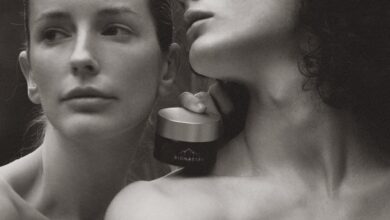Is your house drowning in toys? If you feel you have to tiptoe to avoid Lego blocks, puzzle pieces and pretend food in every area of your home, it’s time to set up a toy room!
Designing a playroom is a fun way to bond with your children and create a space you both love – chances are you’ll end up spending a lot of time there, too. It’s also important to consider safety features, especially if you have younger children who will play there unsupervised. Read on for five tips on blitzing the ultimate toy room design.
H2: Tip 1: Get organised
First of all, decide which area of your home you’re going to sacrifice to the toy overlords!
This might involve clearing out a spare room, finishing a basement, or having your kids share a bedroom to free up space for a toy room. Ideally, you’ll keep this separate from your main family living areas and your child’s sleeping space (to avoid distractions at nap and bedtime). However, if you live in an apartment or smaller house, even carving out an area of your living room or your child’s bedroom and clearly marking the border of the ‘toy zone’ is an option – more on that coming up.
No matter what space you choose for your play area, the aim is to decorate it intentionally to make it clear that ‘all toys live here’ so they don’t sneak their way back onto your floors.
H2: Tip 2: Have fun with colours and patterns
Using bright colours to decorate the space is guaranteed to make your kids happy. If they’re old enough, get them involved in choosing the colour scheme and theme for their playroom. Let their imagination run free as they play interior decorator. Here are some ideas to get your started:
- Go bold by painting a feature wall or using removable wall decals in playful or quirky designs.
- Colourful storage baskets in funky prints are a great way to combine design elements with functionality.
- Toys and books can be part of your decor too! Wooden toys like rainbows, imaginative play and stacking toys look great on open shelves. Play silks are a colourful way to decorate walls, and open bookshelves displaying the covers of picture books are eye-catching, while also being practical.
- Personalise the space by hanging your child’s artwork, family photos or other pictures at your child’s eye level.
H2: Tip 3: Consider the space
While it will be tempting to banish all your kids’ indoor play equipment, including things like ride-on toys, art easels or craft tables, to their playroom, make sure you consider how much space there is.
- It’s important to have plenty of open space for free play and multiple people (and pets!) sitting in the room at one time. There’s nothing worse than trying to build a Lego creation or a train line and your child not having the space to match their imagination.
- If you don’t have room for everything, prioritise smaller toys like action figures that are at risk of being strewn everywhere.
- Even if you have carpet, play mats or rugs are a smart idea. Not only do they provide a softer surface for your child to play on, but if you’re setting up your toy area in your living room or child’s bedroom, you can use it to designate their play zone. They can also help to prevent breakages and reduce damage due to spills.
- Use storage solutions like stacking tubs and shelving to edge the room, or to create a border between play zones and living space.
- Tents are a fun way to create a quiet reading area that can be easily folded away to create more floor area when needed.
H2: Tip 4: Storage, storage, storage
A big part of keeping toys organised – and making it easy for your children to keep their room tidy – is having a ‘home’ for all of their toys. Use baskets, trays, shelves and drawers to store and display toys. If the contents of a drawer or other storage unit is hidden, label it clearly so your kids know what belongs where. If you have preschoolers, you can create signs with images instead of words so they can contribute to keeping everything organised too.
If you have more toys than space, creating a toy-rotation system can help cut down the chaos. Keep out only a selection of their toys and store the rest out of sight, rotating the in-use and stored toys every few weeks, or when your kids start to lose interest.
H2: Tip 5: Make it safe
Not only will their toy room be an area your children will spend a lot of time in, but they’ll also use it unsupervised, so safety needs to be one of your utmost considerations. You’ll breathe a lot easier knowing you’ve neutralised any safety concerns before letting the kids loose.
- Fix any freestanding shelving to the walls, cover any power outlets, and ensure blind and curtain cords are out of harm’s way.
- Lock windows if there is a risk of injury from falling.
- Consider safety risks posed by the toys themselves – magnets, small parts accessible to mouthing infants and cords or strings can all be hazards.
The best part about setting up a playroom – besides the obvious benefit of reducing the clutter in the rest of your home – is watching your children take ownership of the space and make it their own. Your kids will play better when they can access all their toys easily, and decorating your playroom in bright, happy colours is a surefire way to foster their creativity and imagination.




